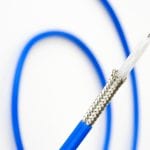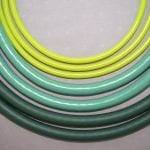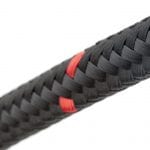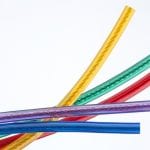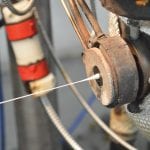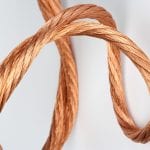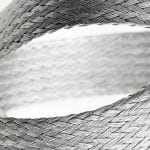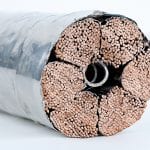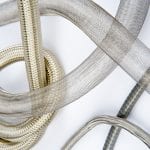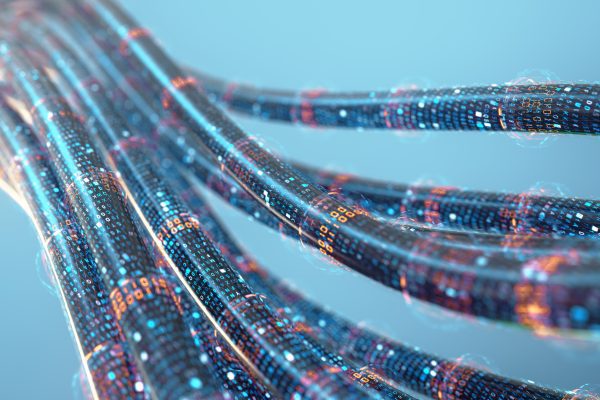Fiber optics have revolutionized the technology of nearly countless industries since Donald Keck and Peter Schultz working at Corning applied for a patent, titled “Method of producing optical wave guide fibers,” in May 1970. The ready availability of fiber optics today has driven industries and markets as diverse as computer networking, cable TV, telecom, surgery, dentistry, spacecraft design and others to new levels of capacity and performance. However, the origin of fiber optics began long before 1970. Even during the 1950s doctors used fiber optic endoscopes to peer inside the human body. But far more improbably, the origin of fiber optics stems from the scientific principle known as total internal reflection, which had early scientists grappling with that mysterious phenomenon as long ago as 1841.
The Earliest Days
Total internal reflection speaks to the bending of light as it passes from one medium to another. Daniel Colladon first demonstrated how light could be guided around curves while serving as a professor at the University of Geneva in 1841. He collected sunlight and routed it through a water tank with a jet at the far side. When the sunlight pouring into the tank reached the jet at a glancing angle, the light was captured in the stream of water that fell, in a parabolic curve, to the ground. Instead of traveling in a straight line as light usually does, light was “captured” inside the curving stream of water exiting the jet.
Causing light to follow a curved path inside a stream of water captured the imagination of many in the scientific Victorian audience of the day. Eventually, this strange and exciting phenomenon made its way to the general population—most notably during the Exposition Universelle of 1889 in Paris—where fountains of light kept visitors spellbound, and where the 300-foot Eiffel Tower was introduced to amazed citizens.
Fast Forward
Water, of course, didn’t prove to be a useful wave guide for light except for the entertainment value fountains brought to the public at World Fairs. However, by the end of the 19th century, researchers had succeeded at fashioning glass fibers as thin as silk, which eventually led Owens-Corning Fiberglass Corporation to begin producing what has today become a commodity. That fiberglass technology gave birth to today’s fiber optics materials.
In 1954, Dutch scientist Abraham Van Heel covered a bare fiber strand with a transparent covering that had a lower refractive index. The differential between the refractive index of the fiber and its cladding kept light photons “locked” inside the fiber and greatly reduced interference between fibers. Van Heel’s discovery serves as the foundation of commercial grade fiber optics today.
How Fiber Optics Work
Coherent light photons emitted by a laser travel through a fiber optic strand, bouncing repeatedly off the walls of the strand like tiny balls pushed through a physical pipe. When the individual photons of light hit the walls of the glass pipe at a small angle (less than about 42 degrees), they are reflected back into the center of the pipe to continue on their way. Those photons that hit the walls of the pipe at a larger angle would normally “leak” out of the pipe. However, if the pipe is surrounded by a substance that has a higher refractive value, those photons are again reflected back into the main pipe as if they had hit a polished mirror. This is the mechanism known as total internal reflection.
The main part of the fiber optic cable, the middle, is known as the core. If only the core were used to transmit photons from point to point, some of them—those that hit the “wall” at greater than 42 degrees—would escape and flash off to some other place. However, the cladding keeps the light photons inside the core.
Types of Fiber Optic Cables
Fiber optic cables can be manufactured as single mode or multi-mode units.
A single mode fiber optic strand has a thin core that ranges between 5 and 10 microns in diameter. All the light photons travel down the middle of the core without bouncing along its edges. Much of the fiber that enables the Internet, as well as telecom and cable TV, use single mode fibers that are usually wrapped together in large bundles to increase the number of signals carried by a given fiber optic cable.
The core of multi-mode fiber optic cables may use fibers that run 50 to 100 microns in diameter. This larger core allows light of varying wavelengths to travel together through the cable. Red, green, blue and other colors of light, including invisible infra-red light, can all travel together with each carrying a different “channel” of communication and data.
Single mode fiber can send information up to 100 km (about 60 miles) without the need for amplification, while multi-mode cables work effectively only at short distances, such as within a data center or local area network.
Advantages of Fiber Optics
For decades, copper wire carried voice, images, data and intelligence from one point to another. However, fiber optics deliver some advantages over copper. For instance, the TAT-7 trans-Atlantic copper cable was AT&T’s seventh such cable. It provided service between the late 1970s and 1994. It connected New Jersey and southwest England, allowing some 4,000 simultaneous phone calls between the two continents via copper. Their TAT-8 fiber optics cable spanning the Atlantic contained two pairs of fiber. Each pair was able to carry 280 million bits per second (280 Mbps), allowing the equivalent of 35,000 phone calls, almost nine times the capacity of TAT-7.
Beyond bandwidth and capacity, fiber offers additional benefits over copper.
- Lower cost. Manufacturing an optical cable can be less expensive than copper of the same length. Further, some futurists predict earthly supplies of copper will be exhausted as soon as the late 2040s. This has led companies including Deep Space Industries, Kepler Energy and Space Engineering, Planetary Resources and others to begin formulating plans to mine asteroids to replace copper and other metals important to our technological lifestyles. In the meantime, fiber faces no such supply challenge.
- Fiber optic cable is thinner. Optical fibers can be drawn to diameters of 50 microns (0.00197 inch). The manufacturing process adds a cladding that typically brings the diameter to 125 microns. Then, a protective coating increases overall diameter of the fiber strand to 250 microns (0.00994 inch). This thinness makes fiber ideal for medical devices such as bronchoscopes, endoscopes and laparoscopes. Plus, fiber’s light weight and thinness simplify the design of technological equipment. Further, because fiber is so thin, many more pairs can be bundled into a cable of a given diameter than if copper were used.
- Less attenuation. A typical 50 micron fiber with 125 micron cladding has an attenuation coefficient of 3dB when 850nm light is passed through the fiber, and only 1 db at 1300nm wavelength. Copper, on the other hand, attenuates the signal according to both the length of the cable and the frequency of the signal in question. A typical CAT-5 twisted pair cable ranges from 13dB loss per 1,000 feet at 4 MHz to 67 dB at 100 MHz. In addition, fiber does not suffer from cross-talk interference between conductors, nor is it affected by external electromagnetic fields.
- Lower power. With low attenuation factors, signals in fiber degrade less than in copper. Therefore, low power laser transmitters can be used rather than high powered electrical transmitters required for copper. Low power translates to lower operating costs.
- Fiber is inherently safer. Because no electrical current flows in fiber, the likelihood for overheating and fire damage is non-existent.
- Pulling Tension. If you plan to pull copper cable through conduit, be aware that it’s rather delicate. Copper cable has a 25-pound tension limit, while basic fiber has a 100-200 pound limit.
- Copper wires emit an electromagnetic field whenever current passes through them. Bad actors can use a sensitive antenna to pick up the energy radiated from a copper cable to compromise the security of a computer network. Because fiber optics do not carry electrical current, there is no radiated energy to be tapped by an antenna. To listen in on a fiber network causes attenuation, which can be detected using a reflectometer to find the location of a tap on fiber cable.
Conclusion
Fiber has brought incredible advances to almost every aspect of 21st century living. Even though companies are bringing amazing new technologies to market—such as wireless power that allows devices to run and recharge without a power cord—it’s difficult to see how the flexibility, economics and performance of fiber optics might be replaced with a more advanced technology. Yet, even as we say that, organizations like Lawrence Livermore National Laboratory (LLNL) are working on optical amplifiers that effectively double the throughput of existing fiber optic cables. Perhaps the future of fiber optics is just as unknowable and unlimited as its improbable past.
New England Wire has extensive experience with the special handling and processing requirements of fiber. We are happy to incorporate fiber optics into your custom cable design or work with you on a specialty project using fiber.
Incidentally, if you’re interested in a thorough and entertaining summary of fiber optics, take time to find Jeff Hecht’s book, one of the Alfred P. Sloan Foundation’s technology series, City of Light: The Story of Fiber Optics.








